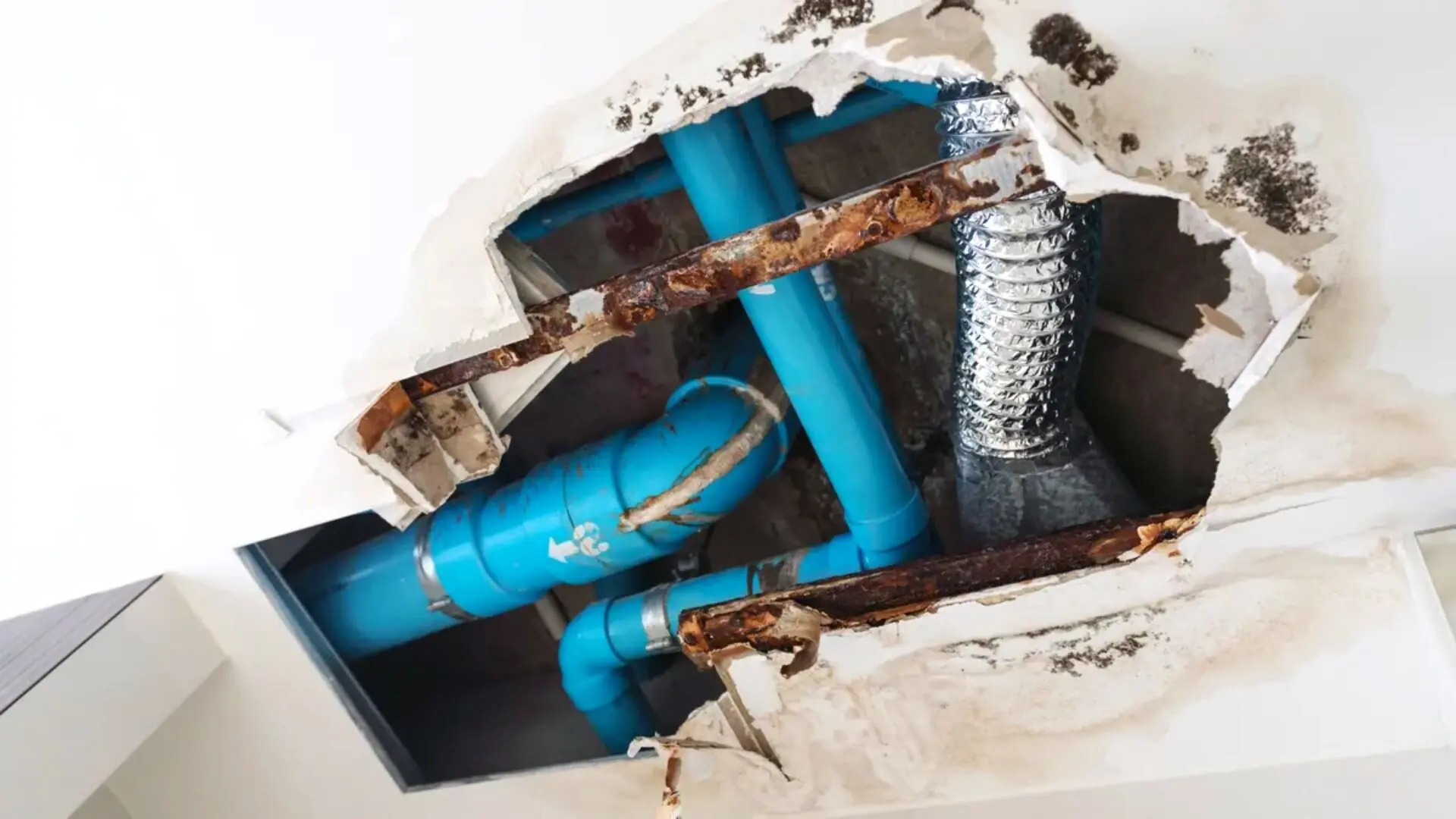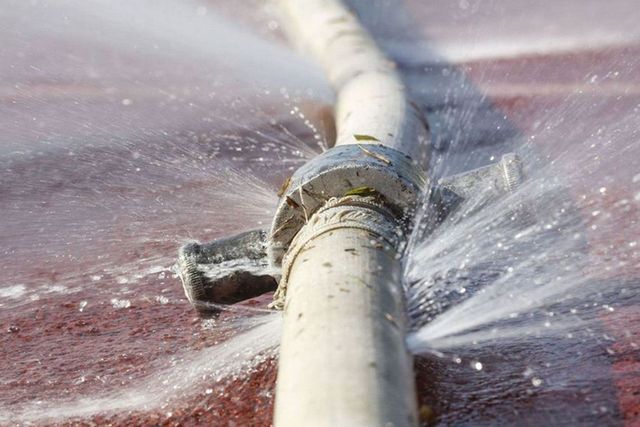The Hidden Dangers of a Burst Pipe and How to Fix It Quickly
The Hidden Dangers of a Burst Pipe and How to Fix It Quickly
Blog Article
Avoiding Burst Water Lines: Important Tips to Safeguard Your Plumbing
Stopping ruptured pipelines is a crucial concern for homeowners, especially during chillier months when the danger of cold is enhanced. Implementing strategic actions such as correct insulation, regular examinations, and keeping constant indoor temperatures can considerably minimize the probability of pipe failure.
Understand Pipe Vulnerabilities
Understanding pipe vulnerabilities is essential for efficient pipes maintenance and stopping costly damage. Numerous aspects add to the sensitivity of pipelines to ruptureds, consisting of material composition, age, and environmental problems. Older pipes, especially those made from galvanized steel or polybutylene, typically break down over time, bring about raised danger of tears and leakages.
Temperature changes can also dramatically impact pipe stability. In chillier climates, water trapped in pipes can ice up, increasing and exerting stress on the pipe wall surfaces, which may ultimately result in a ruptured. Furthermore, high water pressure can strain pipes, particularly at bends and joints, heightening the chance of failing.

Insulate Pipes Properly
Appropriate insulation of pipelines is critical for preventing cold and subsequent ruptureds throughout winter (burst pipe). Insulating your plumbing system efficiently safeguards versus temperature drops that can cause pricey damage. Begin by identifying susceptible areas where pipelines are subjected to outdoor temperatures, such as basements, attic rooms, and exterior wall surfaces
Use foam pipe insulation sleeves or cover insulation tape around these locations to offer a protective barrier. Guarantee that all areas of the pipelines, specifically those with restricted warm direct exposure, obtain sufficient insulation. Pay unique interest to joints and installations, as these are a lot more prone to freezing.
When insulating, it's vital to select materials that satisfy local building codes and are appropriate for the specific environment. For circumstances, fiberglass insulation is typically advised for its thermal resistance properties - burst pipe. Furthermore, take into consideration utilizing heat cable televisions or tape in severe conditions, which can be connected in to provide supplementary warm
Frequently inspect insulated pipelines for any indicators of wear or damages, as jeopardized insulation can reduce its effectiveness. By taking these aggressive measures, you dramatically lower the danger of pipeline bursts, making certain a trustworthy pipes system throughout the winter season.
Maintain Constant Temperature Level
A secure interior temperature level is necessary for preventing burst pipes throughout the frigid months. When temperature levels decrease, water within pipes can ice up, increasing and producing stress that may inevitably trigger the pipelines to ruptured.Utilizing a programmable thermostat can aid manage interior temperature levels properly, guaranteeing that spaces with plumbing remain warm also when the house is vacant.
In enhancement, it is prudent to permit taps to trickle somewhat throughout severe cold spells. This minor circulation of water can stop cold by relieving stress within the pipes. During specifically extreme climate occasions, think about temporarily putting on hold any nighttime obstacles on your thermostat to keep a stable warm setting. By executing these techniques, home owners can significantly lower the danger of pipeline bursts and guard their pipes systems versus the severe winter elements.
Regularly Examine Plumbing
Routine inspections of pipes systems are crucial for stopping burst pipes and preserving general home stability. Routine checks enable homeowners to determine potential concerns before they intensify right into expensive repairs or major water damages. Throughout these evaluations, it is necessary to check out noticeable pipes for signs of rust, leakages, or wear. Pay special focus to locations vulnerable to cold, such as basements, attic rooms, and exterior walls.
Furthermore, examining connections and joints is vital, as these points are commonly at risk to leakages. House owners ought to also examine water stress degrees, as too much pressure can stress the plumbing system and boost the danger of pipe ruptureds.
Think about organizing professional plumbing evaluations at least when a year, especially prior to winter months, to guarantee your system is planned for colder temperature levels. Regular inspections not just help in determining instant problems yet additionally foster long-term maintenance approaches that can boost the life expectancy of your pipes system. By being proactive in your strategy, you can guard your home versus the disruptive and costly repercussions of burst pipes. Focusing on plumbing assessments is a financial investment in your home's health and wellness.
Know Emergency Situation Treatments
Comprehending emergency situation treatments is crucial for every homeowner, especially after carrying out normal pipes evaluations. Being planned for a pipes emergency situation can substantially reduce damages and save costs. Situate your major water shut-off valve; it is typically discovered near the water meter or where the main line enters your home. Familiarize yourself with its procedure, as turning off the supply of water swiftly can stop considerable flooding.
Next, maintain necessary devices convenient. A plumbing emergency situation package ought to consist of a wrench, bettor, and towels, in addition to a flashlight and a pail for tiny leaks. Furthermore, consider having the contact details for a trusted plumbing readily available, must the situation escalate past your control.
If you identify a leak or burst pipe, quickly shut off the supply of water and alert your plumbing technician. In addition, record the damage with photos for insurance purposes. burst pipe. Recognize the indications of possible plumbing problems, such as unusual water stress fluctuations or damp spots on wall surfaces
Eventually, aggressive knowledge and speedy activity are important in managing pipes emergencies, guaranteeing your home remains secured and reducing potential damage.

Conclusion
Finally, check out here avoiding burst pipes requires a multifaceted strategy that includes understanding pipe vulnerabilities, correct insulation, maintaining constant indoor temperature additional resources levels, regular evaluations, and knowledge of emergency treatments. By executing these necessary methods, the danger of plumbing failures can be dramatically lowered, thereby guaranteeing the longevity and effectiveness of the pipes system. Proactive actions not just protect against possible damages however also add to general water conservation and the protection of residential property.
In cooler climates, water caught in pipes can ice up, applying and expanding stress on the pipeline walls, which might ultimately lead to a ruptured. When temperatures decrease, water within pipes can freeze, increasing and producing pressure that may inevitably cause the pipelines to ruptured. By executing these techniques, home owners can significantly minimize the threat of pipeline ruptureds and guard their plumbing systems against the extreme winter months components.

Report this page